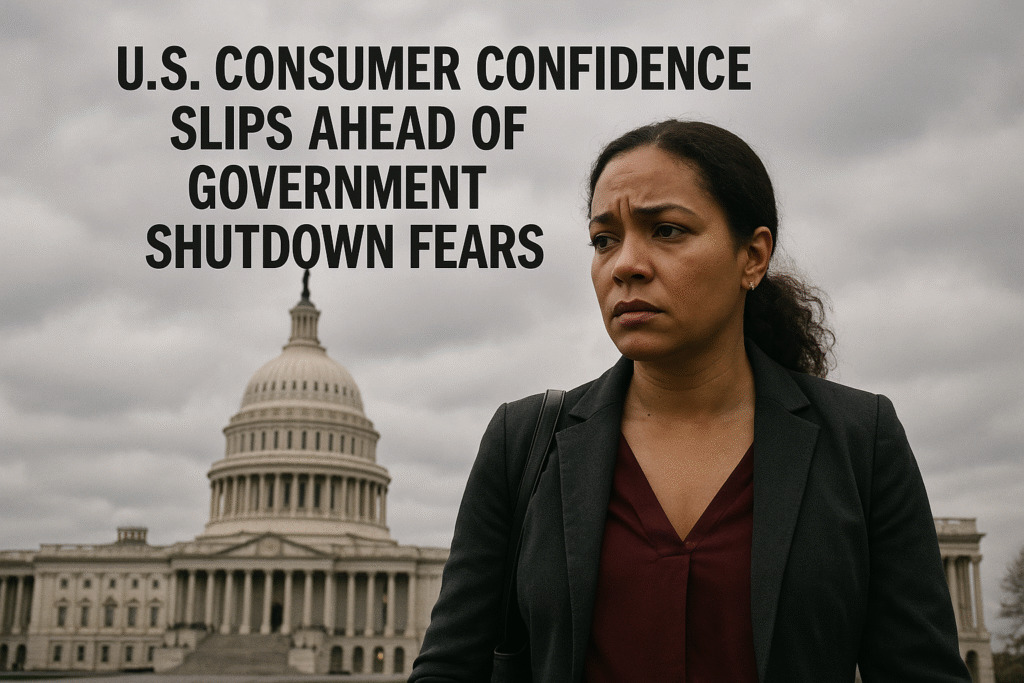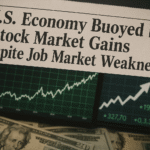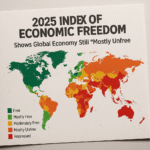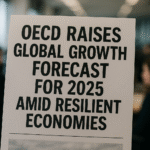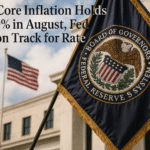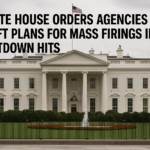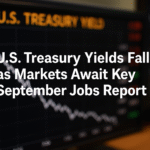Washington, D.C., September 30, 2025 – 9:15 AM EDT — By Harshit
Consumer confidence in the United States fell in September, underscoring growing unease among households as the nation edges closer to a federal government shutdown. The Conference Board’s widely watched index registered a reading of 94.2, down 3.6 points from August and below the Dow Jones estimate of 96.0. It marks the lowest level since April, highlighting a shift in sentiment as economic and political uncertainty looms.
Economic Growth and Confidence
The Conference Board reported that its “present situation” index — a measure of consumers’ views on current business and labor market conditions — also dropped to its lowest point in a year. Stephanie Guichard, senior economist for global indicators at the organization, said the data showed consumers are feeling the pinch.
“Consumers’ assessment of business conditions was much less positive than in recent months, while their appraisal of current job availability fell for the ninth straight month to reach a new multiyear low,” Guichard noted.
This decline comes at a critical moment, with nonessential government operations slated to close at midnight unless lawmakers break the funding impasse.
Labor Market Trends
Alongside the confidence report, the Bureau of Labor Statistics (BLS) released its Job Openings and Labor Turnover Survey (JOLTS), which may be the last data update if the shutdown proceeds. The BLS said job openings totaled 7.23 million in August, slightly above expectations of 7.1 million and 19,000 higher than July. However, openings were still down 422,000 — or 5.5% — from the same period last year.
The data showed a slower pace in hiring and separations, with quits — often seen as a measure of worker confidence — falling by 75,000. The downward trend highlights waning optimism among employees about switching jobs in a cooling labor market.
Inflation and Monetary Policy Outlook
For the Federal Reserve, labor market stability remains central to its decision-making on interest rates. Markets currently expect the Fed to cut rates twice before the end of the year, with a half-point reduction likely split between the October and December meetings.
Boston Fed President Susan Collins struck a cautious tone on Tuesday, acknowledging risks ahead. “My baseline outlook doesn’t see the labor market softening much further – but there are risks. In particular, I see some increased risk that labor demand may fall significantly short of supply, leading to a more meaningful and unwelcome increase in the unemployment rate,” she said.
If Congress avoids a shutdown, the BLS is expected to release September payroll figures on Friday, with economists forecasting 51,000 jobs added — up from just 22,000 in August.
Market Reactions
Financial markets responded cautiously to the confidence and labor data, with Treasury yields edging lower as investors awaited clarity on both fiscal policy and the Fed’s next move. Analysts warned that continued uncertainty could weigh on household spending and corporate hiring.
The survey also revealed diverging perceptions among American households. The share of respondents saying jobs were “plentiful” slipped to 26.9%, down more than three percentage points from August, while those saying jobs were “hard to get” held steady at 19.1%.
Outlook and Consumer Sentiment
Beyond employment, households are growing more pessimistic about personal finances. The Conference Board said views on current financial situations saw their steepest one-month decline since the question was introduced in July 2022. That shift points to rising concerns about inflation, stagnant wage growth, and the potential impact of a prolonged government shutdown.
While the economy has shown resilience in recent quarters, the mix of falling consumer confidence, political brinkmanship in Washington, and a slowing labor market suggests vulnerabilities ahead. Economists warn that if confidence erodes further, consumer spending — a pillar of U.S. economic growth — could falter, raising risks of a broader slowdown.

